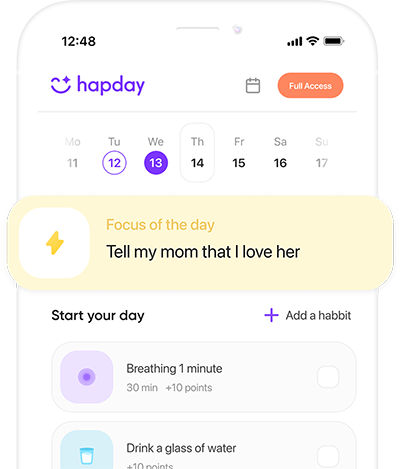Table of Contents
- The Intricate Dance Between Journaling and Trauma Recovery
- The Healing Magic of Journaling for Childhood Trauma
- Putting Pen to Paper: Techniques for Healing
- Making Journaling a Go-To Habit
- Bumps in the Road to Journaling
- Wrapping Things Up
The Intricate Dance Between Journaling and Trauma Recovery
Navigating childhood trauma is… well, it’s anything but straightforward, right? Imagine it’s a winding road, sprinkled with emotional speed bumps and detours, all while you’re trying to make sense of what happened—and why it still matters. Journaling? It’s stepped up as a go-to remedy for many, especially Millennials and Gen Z women. Let’s dive into how this practice can not just help, but actually transform your healing journey, backed by both science and a few handy tips.
Honestly, journaling’s more than scribbling down your thoughts. Anyone else feel liberated after a good journaling session? According to some folks in lab coats (yup, scientific studies), particularly a gem from the Journal of Traumatic Stress, putting those swirling thoughts down on paper can dramatically alleviate symptoms of depression and anxiety. Amazing, isn’t it? The act of translating your inner chaos into words allows for deeper insight—a must-have when working through childhood trauma.
And here’s another thing—research in Advances in Psychiatric Treatment suggests this practice can organize jumbled thoughts, aiding in both cognitive processing and emotional balance. If you’re wrestling with past traumas, this step is kind of like finding the missing piece of a puzzle.
The Healing Magic of Journaling for Childhood Trauma
1. A Haven for Self-Expression
Alright, let’s be real—childhood trauma often comes paired with baggage like shame and embarrassment, making it tough to say certain things out loud. Journaling grants you this private, no-judgment zone. Write your heart out—messy, raw, and honest. This safe tucked-away corner is vital for truly diving into those past experiences.
2. Finding Emotional Clarity
Think of journaling as an emotional detective. By pinpointing and naming those emotions connected to trauma, you’re creating a roadmap for understanding them. An article in the American Journal of Psychiatry pointed out that this self-reflection can beef up emotional resilience. Untangling those feelings? It’s like decluttering your brain’s attic—crucial for mental well-being.
3. Changing the Mental Script
Reshaping the mind’s narrative after trauma? Not easy! Journaling can gently steer cognitive restructuring by helping you question and evolve those pesky negative thoughts. As those pages fill up, you might spot distorted beliefs and slowly swap them for more balanced ones. It’s like giving your mental health a fresh coat of paint—it just feels good.
Putting Pen to Paper: Techniques for Healing
1. Letting Go with Free Writing
Free writing: simple and unfiltered. No grammar police here! Just set a timer for, say, 10 minutes, and let whatever comes to mind flow freely. This can unearth subconscious elements that contribute to your trauma. Who knows what you’ll discover?
2. Guided Prompts for Deep Reflection
If you’re fumbling around for where to start, guided prompts can light the way. Questions like, “What childhood memory still echoes today?” can unearth forgotten layers. These tiny nudges can take you to places you’ve mentally walked past a hundred times without noticing.
3. Finding Positivity with Gratitude Journaling
I know, talking about gratitude when dealing with trauma might feel counterintuitive, but hear me out. Gratitude journaling can pivot your focus from past pains to present joys, and science backs it—it boosts emotional well-being! Thank you, Clinical Psychology Review.
4. Get Creative!
How about mixing in some art? Doodles or haikus, whatever floats your boat! Integrating creativity into journaling is not only a great diversion, but it might also resonate with parts of yourself that words can’t always reach.
Making Journaling a Go-To Habit
- Choose Your Time: Whether you’re a morning person or a night owl, pick a daily time slot for journaling. Keep it regular.
- Craft Your Space: Carve out a cozy little nook where distractions can’t reach you.
- Start Small: Baby steps. Ease into it with short sessions at first—no pressure.
- Remember to Breathe: It’s a journey, not a race. Give yourself grace in this process. Immediate outcomes? Not necessary.
Bumps in the Road to Journaling
When you’re journaling, expect to sometimes stumble upon those uncomfortable feelings—don’t worry, it happens. Approach with self-kindness and, if it’s too much, seek a therapist’s wisdom.
Wrapping Things Up
Journaling as therapy? Absolutely a tried-and-true method for coming to terms with childhood trauma. From offering a judgment-free zone to reshaping mental perceptions, it lays the groundwork for significant growth and healing. So as you start, be gentle with yourself, and embrace how writing can be a gentle ally on this path.
Check out Hapday if you’re looking for some structured journaling help to boost your mental rejuvenation!
References
- Sloan, D. M., & Marx, B. P. (2004). A closer examination of the structured written disclosure procedure. Journal of Traumatic Stress, 17(4), 361-366.
- Pennebaker, J. W., & Seagal, J. D. (1999). Forming a story: The health benefits of narrative. Journal of Clinical Psychology, 55(10), 1243-1254.
- Kashdan, T. B., & McKnight, P. E. (2009). Origins of purpose in life: Refining our understanding of a life well-lived. Annals of Behavioral Medicine, 37(2), 104-116.

